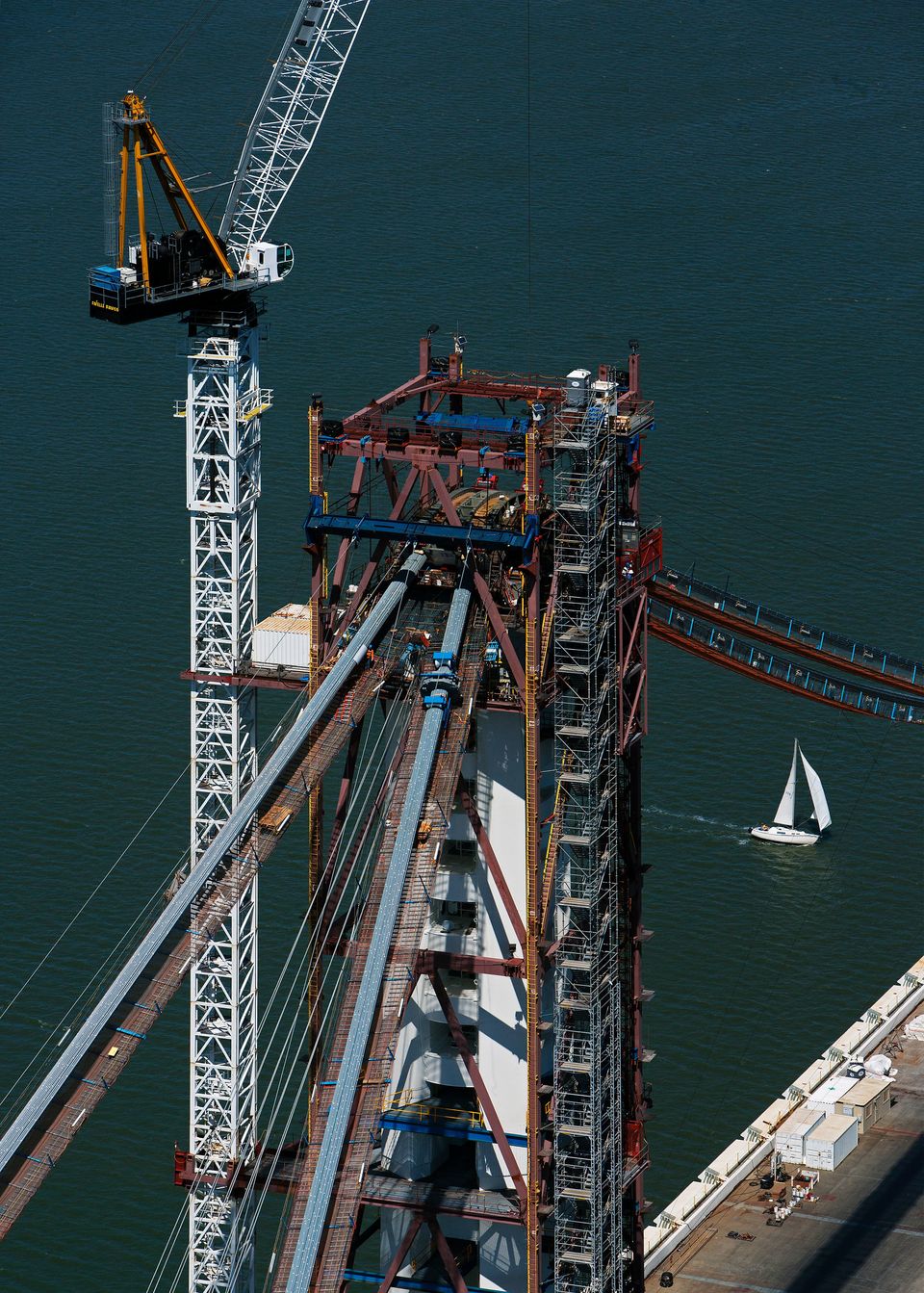
OAKLAND -- Four years before large anchor rods on the new Bay Bridge snapped, Caltrans ordered the contractor to test for cracks in key steel fasteners used throughout the suspension span.
The order came three weeks after the state and American Bridge Fluor Jt. Venture clashed over what Caltrans characterized as the contractor's failure to order 96 anchor rods -- the same batch of 3-inch-diameter rods where 32 broke last March -- in sufficient time for the normal product testing process.
Caltrans had recorded by that time three instances where steel parts supplied by Ohio-based manufacturer Dyson Corp. and its subcontractors failed to meet specifications.
It is unclear if the agency's concerns triggered the broad testing order, and Caltrans is declining to answer any questions.
"Due to the Toll Bridge Program's ongoing investigation, we cannot address specific questions about the bolts' fabrication process," said Bay Bridge spokesman Andrew Gordon.
The broad testing directive is among nearly 500 pages released to the media Friday through a Public Records Act request filed after the bolt failure earlier this year on the $6.4 billion replacement eastern span.
Senate Transportation Committee Chairman Mark DeSaulnier, D-Concord, was scheduled to meet Tuesday with Caltrans Director Malcolm Dougherty and review the documents.
"My expectation is that Caltrans has to be transparent and forthcoming, and explain to me and the public what this material means so that we can all understand what has transpired," said DeSaulnier, who will hold a hearing in the next several weeks on the status of the bridge project.
Among other details the documents reveal:
--Caltrans inspectors gave Dyson and two of its six subcontractors a "contingent pass" during 2007 and 2008 advance site visits. The other four failed for what auditors described as significant quality or documentation shortfalls.
--TC Industries of Illinois, a Dyson subcontractor with a contingent pass, lost the paperwork associated with heat treatment of the 96 anchor rods in 2008 and had to put the steel through the process a second time. Metallurgists say reheating could alter the steel's properties.
While many Bay Area residents are just learning what plagues high-strength steel such as these anchor rods, which act as bolts, Caltrans has clearly known about it for years.
For reasons the agency has not yet explained, Caltrans back in October 2008 directed American Bridge Fluor to conduct magnetic particle testing on the main span's fasteners including cable bracket anchor rods, main cable anchor rods and other bolts.
Methods vary but it usually involves applying a fluid containing magnetic particles to the steel surface, explained U.C. Berkeley materials science Professor Tom Devine.
The liquid is wiped away and the magnetic levels are analyzed under the premise that fluid seeped into any existing cracks.
Water can lead to corrosion and leave the fastener vulnerable to a phenomenon called hydrogen embrittlement, where high-strength steel becomes fragile and snaps when under load.
Caltrans has in recent public meetings pointed to hydrogen assault as the culprit in the 32 fasteners that broke in March after contractors tightened them down with nuts.
The anchor rods are 17 to 24 feet long and they tie together the bridge deck and pier columns just east of the main span tower through a shear key, a massive concrete and steel structure that helps control sway during an earthquake.
The agency has said the vertically placed rods broke at the first thread in the bottom of the casing due to hydrogen-induced weakening caused by water exposure or a manufacturing mistake.
But the magnetic particle test results were not released as part of the recent data and in any case, the 96 anchor rods were not analyzed as part of Caltrans' broad test directive.
American Bridge Fluor confirmed the rods' exclusion in a Nov. 3, 2008, letter.
The company reminded the agency that the anchor bolts had already been installed within the two shear keys and the concrete pour -- which would embed them and make them less accessible -- was scheduled for Dec. 5.
Even if Caltrans had ordered the rods be subjected to the magnetic particle test, the results may not have predicted that a shocking third of the bolts would fail 4 1/2 years later.
The test indicates the presence of surface cracks and wouldn't have revealed the presence of brittle inner layers that may crack under pressure, Devine said.
Nor would it foretell a later failure of the zinc galvanizing coating designed to shield the steel, if that proves true.
Mandated in the nuclear industry, a fracture mechanics test is the best choice but construction officials rarely use it, said Robert Ritchie, a senior scientist at Lawrence Berkeley National Laboratory and a U.C. Berkeley professor of mechanical engineering.
This test involves notching a steel sample and measuring the amount of force it takes to break it while it is under load or stress, he said.
Yet, construction failures such as broken anchor rods are rarely the result of a single missed test or a manufacturing glitch, he added.
"These things are usually a series of things that come together," Ritchie said. "Any one of the factors on its own might not be a problem but when you combine them, you end up with a disaster."
Contact Lisa Vorderbrueggen at 925-945-4773, lvorderbrueggen@bayareanewsgroup.com, politicswithlisav.blogspot.com or Twitter.com/lvorderbrueggen. ___
(c)2013 the Contra Costa Times (Walnut Creek, Calif.)
Visit the Contra Costa Times (Walnut Creek, Calif.) at www.contracostatimes.com
Distributed by MCT Information Services
